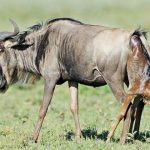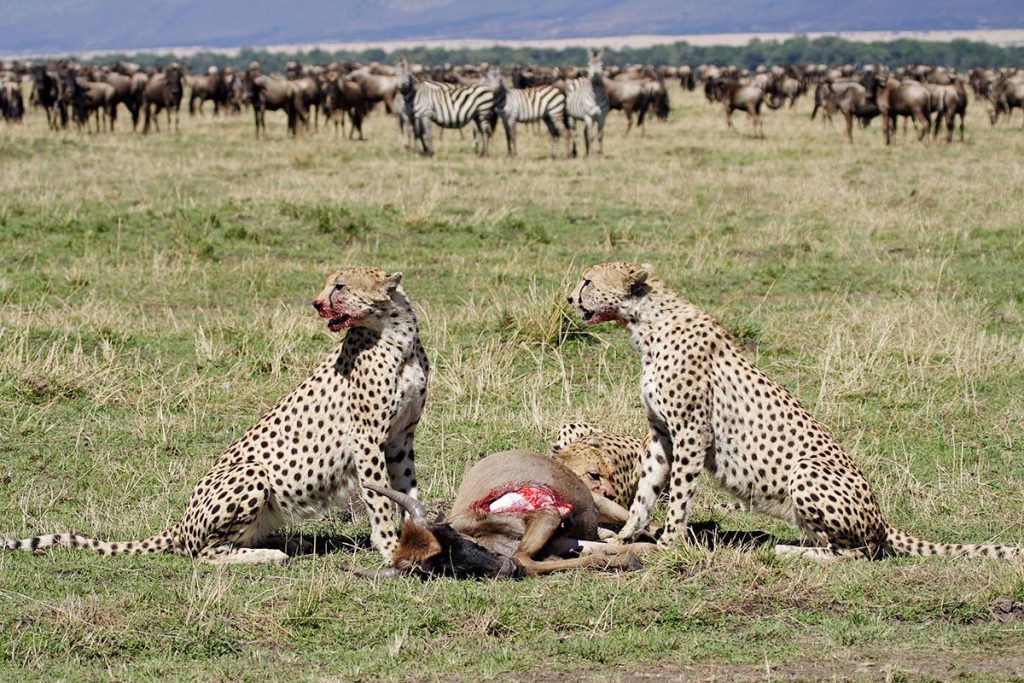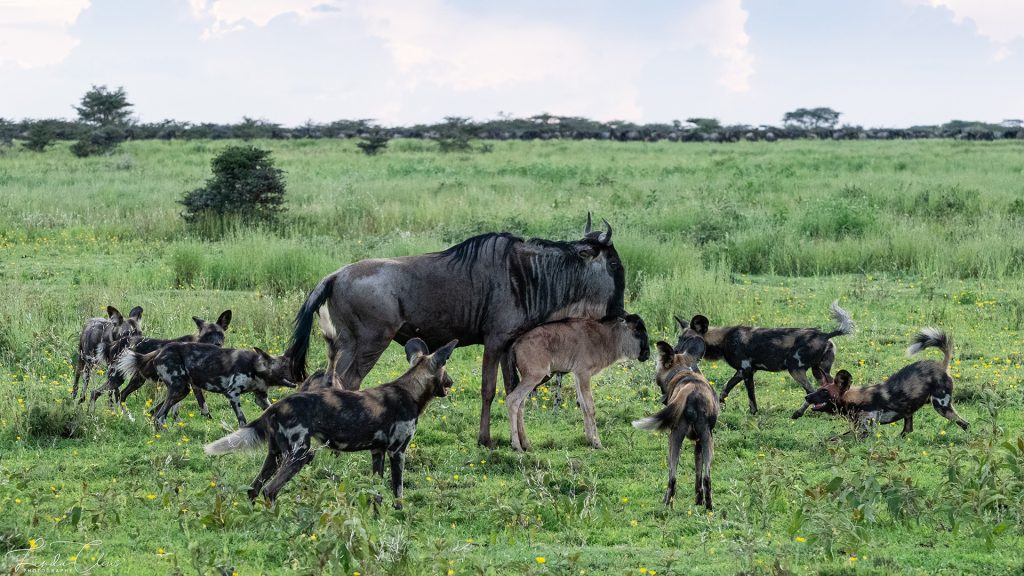Witnessing Nature’s Miracle: The Calving Season in the Serengeti



Calving Season
The calving season in the Serengeti is a truly magical time, offering one of the most intimate and awe-inspiring wildlife experiences in East Africa. Occurring primarily from January to March, this season is marked by the birth of hundreds of thousands of wildebeest, zebra, and gazelle calves across the lush plains of the southern Serengeti and the Ngorongoro Conservation Area. The abundance of newborns attracts an incredible array of predators, adding both intensity and drama to this seasonal spectacle. Here’s everything you need to know about the calving season and why it’s one of the most captivating times to visit the Serengeti.
Why the Calving Season is So Unique
- A Time of Renewal The calving season coincides with East Africa’s short rainy season, which transforms the southern Serengeti plains into a vibrant, green oasis with an abundance of fresh grass. This nutrient-rich grass provides essential nourishment for the pregnant wildebeest and other grazing animals, creating ideal conditions for new life. The calves are typically born within a short window of a few weeks, which maximizes their survival odds and provides safety in numbers.
- Mass Births in the Serengeti Every year, approximately 500,000 wildebeest calves are born within a period of two to three weeks. This synchronized birth phenomenon is a natural survival strategy: with so many newborns arriving simultaneously, predators cannot consume them all, giving more calves a chance to survive. The sight of hundreds of tiny calves standing up and learning to walk mere minutes after birth is a touching and unforgettable experience.
- Unmatched Predator Action The calving season draws predators such as lions, cheetahs, hyenas, and jackals who are well aware of the bounty the season provides. This influx of predators is both thrilling and sobering, as survival becomes an intense daily battle for the newborns. Observing the delicate balance between life and death on the plains reveals the harsh realities and resilience of the wild.
The Best Areas for Calving Season Sightings
- Southern Serengeti Plains The southern plains of the Serengeti, particularly the Ndutu region, are the focal point for calving season. This area’s short-grass plains and seasonal water sources create the perfect nursery for wildebeest, zebra, and gazelle herds. With relatively open terrain, it’s easy for visitors to spot large herds as they gather to protect their newborns.
- Ngorongoro Conservation Area Located just south of the Serengeti, the Ngorongoro Conservation Area also plays a key role in the calving season. The area’s fertile plains offer ideal conditions for both birthing and grazing. The Ngorongoro Crater, while not a primary calving ground, also offers excellent predator sightings, as large carnivores hunt the herds moving across the open plains.
- Gol Kopjes This area in the eastern Serengeti is a magnet for predators, especially during the calving season. Known for its lion and cheetah population, Gol Kopjes is an excellent place to observe both predator and prey interactions against the stunning backdrop of granite kopjes and golden plains.
What to Expect During Calving Season
- An Abundance of Wildlife The sheer number of animals gathered in one area is remarkable. Visitors can expect to see massive herds stretching across the horizon, dotted with young calves as they explore their surroundings. This high concentration of wildlife makes for extraordinary photography opportunities, from adorable shots of baby animals to dramatic predator-prey encounters.
- High Predator-Prey Interaction With so many newborns, predators are particularly active, creating high-stakes situations where survival is always uncertain. Watching cheetahs, lions, and hyenas in action can be intense but is an incredible opportunity to witness the raw dynamics of nature up close. Cheetah mothers, for example, may use the season to teach their cubs hunting skills, providing a rare view of maternal instincts in the wild.
- Family Bonding and Social Behavior The calving season is a period of bonding and social interaction. You’ll witness mothers nurturing and protecting their young, teaching them essential survival behaviors. Calves rely on their mothers not only for nutrition but also for guidance and protection. Observing these familial connections reveals the tenderness and resilience that characterizes life on the Serengeti.
The Timing of Calving Season
The calving season typically peaks from late January to mid-March, though exact timing varies depending on rainfall patterns. Since rain is crucial for the growth of nutrient-rich grasses, which sustain the mothers and their calves, the timing and intensity of the rains play a major role in shaping the calving season’s start and duration. Booking a safari during these months gives visitors the best chance to witness the newborn arrivals and enjoy the lush green landscapes.
Tips for a Successful Calving Season Safari
- Stay in the Right Location Choosing accommodations close to the southern Serengeti and Ndutu area is crucial for getting the best views of the calving herds. Many lodges and mobile camps set up specifically for calving season offer easy access to the most active regions, ensuring that you don’t miss out on the action.
- Bring High-Quality Photography Equipment The calving season is an ideal time for photography, with the rich greens of the plains and an abundance of wildlife. A camera with a good zoom lens will allow you to capture detailed shots of calves, predators, and the stunning landscapes. Patience and timing are key to getting those perfect moments.
- Plan for an Extended Stay Given the unpredictability of wildlife, spending several days in the area will increase your chances of witnessing a wide range of behaviors and interactions. With each day, you’re likely to see new events and gain a deeper appreciation for the rhythms of the Serengeti.
The Role of Conservation During Calving Season
The calving season showcases the importance of conservation in the Serengeti. Efforts to protect migratory corridors and preserve the natural ecosystem are vital for supporting the health of these herds. Conservation initiatives work to safeguard these lands from poaching, habitat encroachment, and climate-related challenges, ensuring that future generations can witness this incredible phenomenon.
By visiting the Serengeti during calving season, travelers directly contribute to the preservation of this natural heritage. Many lodges and safari operators are committed to eco-friendly practices, and visitors are encouraged to support responsible tourism initiatives that benefit both local communities and wildlife.
Why the Calving Season is a Must-See
Witnessing the calving season in the Serengeti is like observing life’s cycles in their purest form. From the gentle birth of calves to the intense pursuit of predators, every day offers new insights into the resilience and complexity of the natural world. It’s a time when life begins, and the instinct to survive is palpable across the plains.
This intimate glimpse into the birth of thousands of new lives makes the Serengeti’s calving season a once-in-a-lifetime experience for wildlife enthusiasts, photographers, and nature lovers alike. For those seeking an immersive, awe-inspiring safari experience, there is no better time to visit the Serengeti than during the vibrant and heartwarming calving season.

One Comment